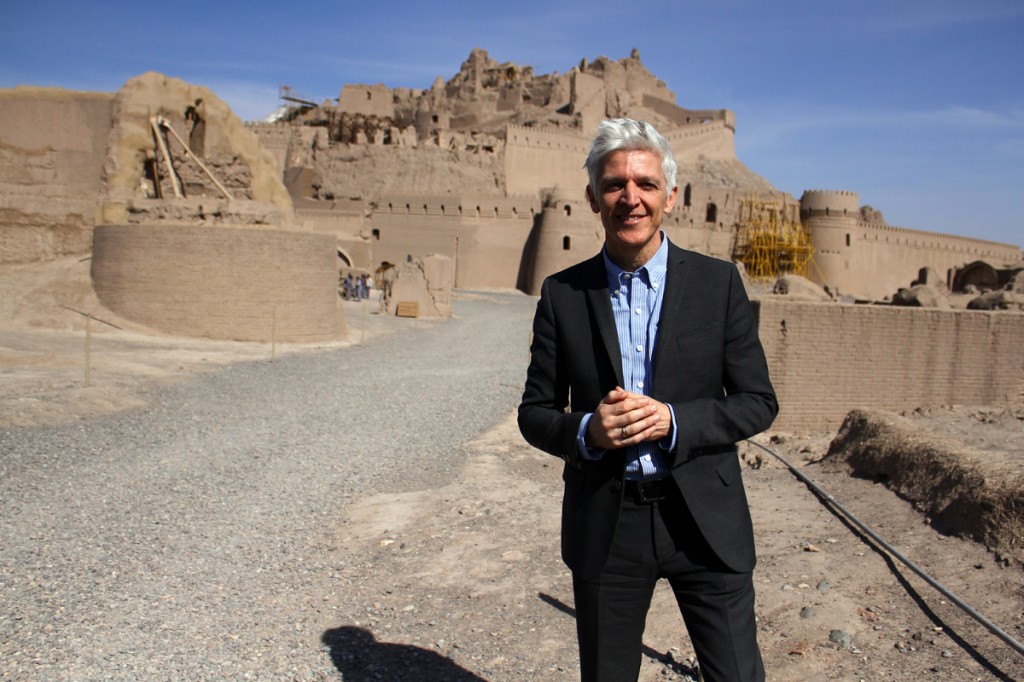Iran and its people have a habit of making an impression on foreign visitors. Those who visit this ancient country are often found talking about Iran’s rich culture and the warm hospitality of its people. In an article published online on Bourse and Bazaar, Italy’s former minister of culture and tourism, who visited Iran in January 2014, elaborated on his experience. The following is an excerpt from his article.
In this day and age, cultural tourism plays a crucial role in establishing relations between countries. Awareness is spreading about the amazing opportunities that a prudent enhancement of the cultural patrimony can deliver. The connections between diplomatic relations, commercial opportunity, and touristic exchanges are powerfully joined in the idea of cultural tourism.
Iran and Italy are two countries that are both heirs and custodians of a huge historic, artistic, and cultural heritage. In fact the preservation of such heritage has been recently been the basis for close collaboration. Italian archaeologists have worked on sites in Persepolis and Esfahan among others. The Citadel of Bam earned UNESCO World Heritage status shortly after the devastating 2003 earthquake, largely because of the reconstruction efforts of the Italian Istituto Superiore per la Conservazione ed il Restauro.
Iranian contemporary art has also made its way to Italy and the city of Ferrara, where, in 2010, six Iranian world-renowned women artists had exhibited their work as part of the Fourteenth Biennale Donna.
Reflecting on the origins of Iranian contemporary art, I also think about the exceptional importance of Iranian craftsmanship which constitutes a heritage of incredible artistic value by itself, and which should definitely be more acknowledged and appreciated worldwide, as it is one of the foundations of Iran’s national identity.
a valuable model
While I was serving my country as minister of cultural assets and activities and of tourism, I went on an official trip to Iran. On that occasion— and during a subsequent trip— I had the chance to recognize and appreciate the greatness of the Iranian cultural heritage. My experience made it clear that by leveraging strength of its cultural heritage Iran could stand to develop a valuable tourism model.
As my former ministerial title demonstrates, the relationship between culture and tourism has been vital to Italy’s economy. The tourism sector contributes about 10% of the country’s overall GDP. Iran ought to follow in the Italian model to protect its cultural heritage, even if the pursuit of economic interests is a primary aim.
The bond between culture and tourism in Iran is clear and undeniable. Iranian artistic and environmental heritage represents one of the key resources for the creation of a sustainable tourism model, as it defines the country’s identitarian traits as an attractive destination. If Iran’s heritage is properly utilized as one of the country’s fundamental touristic levers, inbound tourism would become an exceptional way to guarantee international awareness about its cultural assets, promoting efforts and providing funding to preserve and protect cultural heritage. The fruitful link between culture and tourism would emerge as a virtuous cycle, one that can enhance the potentialities of both areas, without undermining their complex and specific peculiarities.
The future of Iran’s inbound tourism will be determined by the ability to build networks, which must reflect the true potential of a country both rich in history and eagerly awaiting the future. Government bodies, private businesses, community organizations, academic institutions, and other stakeholders must actively seek synergies in the spirit of cooperation. The project to preserve and promote Iranian cultural heritage is both crucial and thrilling.


